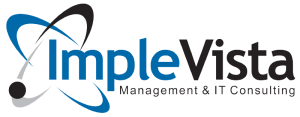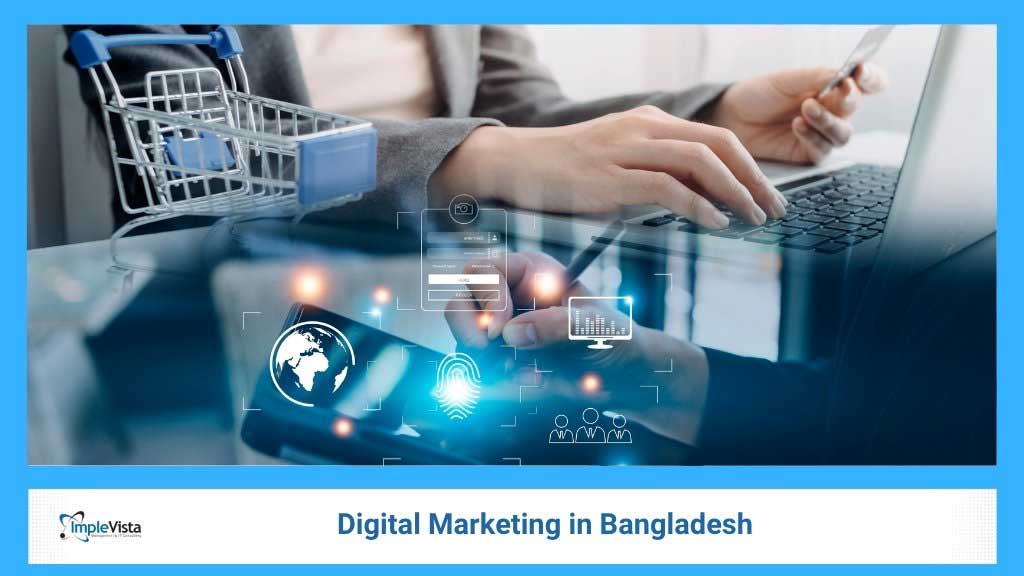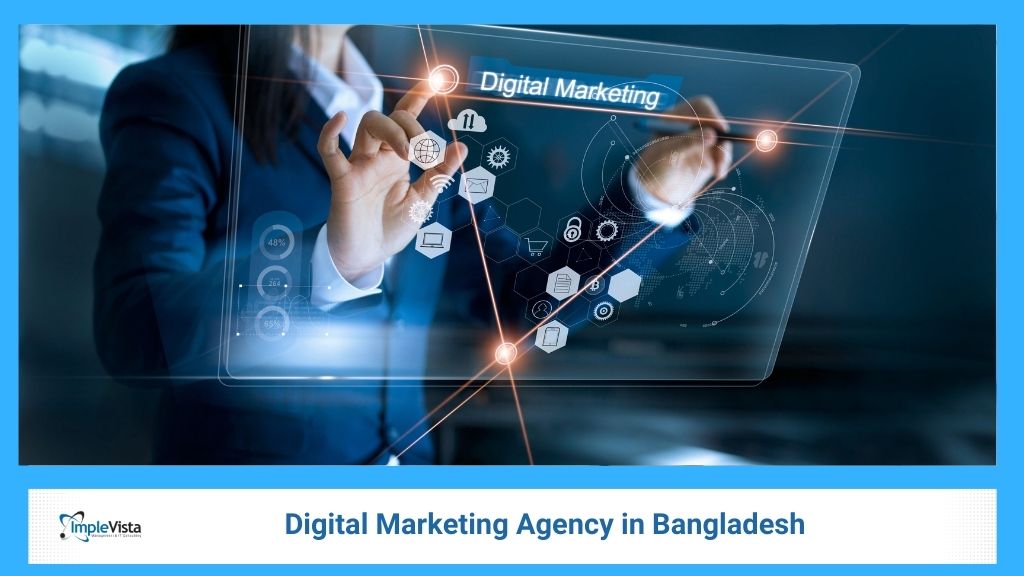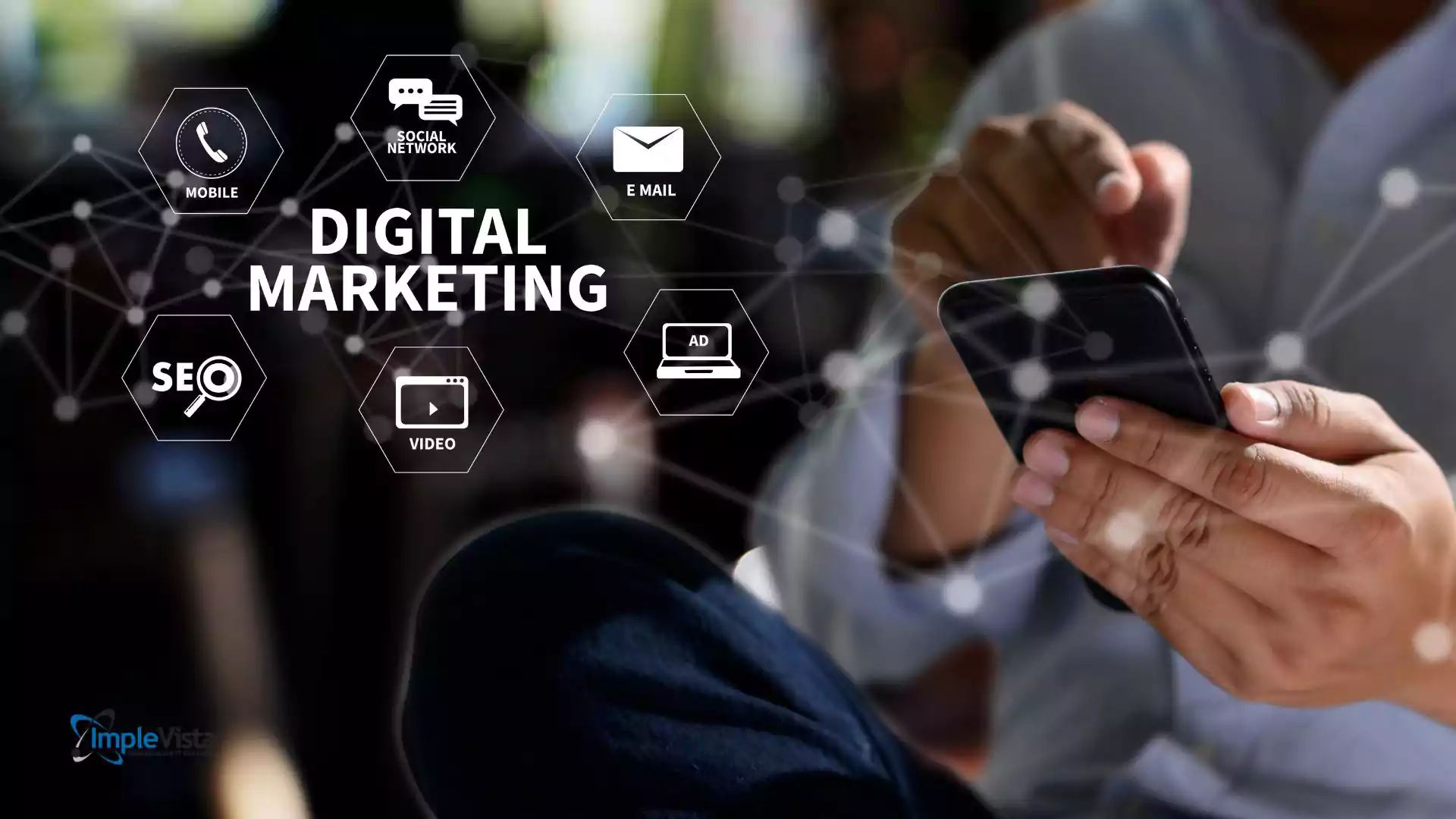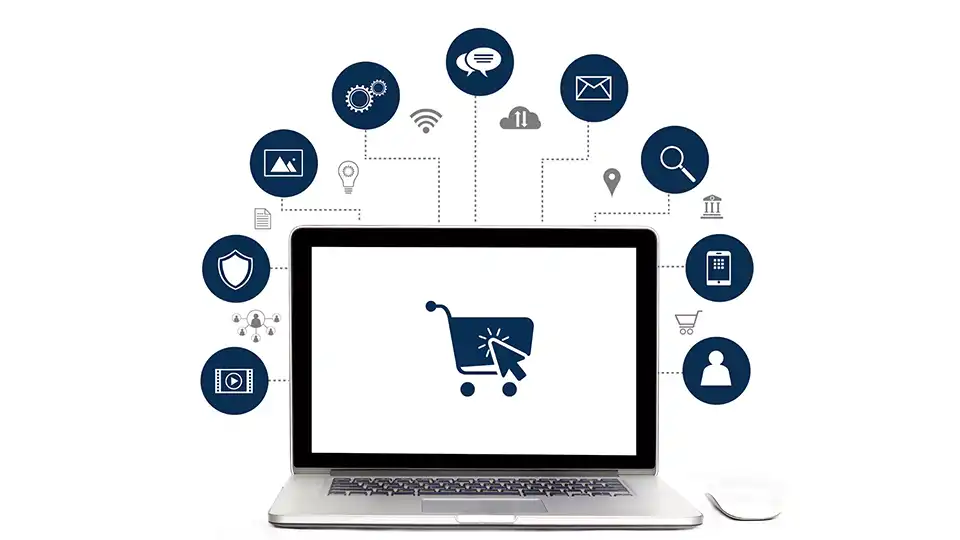In recent years, Bangladesh has experienced a digital transformation. Analysts report that over 81 million Bangladeshi now use the internet – roughly half the population – and smart devices are everywhere. For example, in mid-2025 the Bangladesh Bureau of Statistics found 72.8% of people owned smartphones and nearly 49% were active internet users. With about 52.9 million active social media accounts and affordable data plans, businesses can reach huge audiences online.
This rapid connectivity means traditional channels (TV, radio, print, billboards, etc.) can no longer guarantee the impact they once did. Unlike one-way ads on billboards or newspapers, digital marketing in Bangladesh allows two-way engagement with customers.
For example, an Implevista guide notes that traditional marketing “is limited by geographical boundaries, but digital marketing allows businesses to connect with international tourists, target domestic travelers. and expand into niche markets”. In short, ignoring digital is risky: “in Bangladesh’s fast-evolving market, ignoring digital marketing is no longer a viable option—it’s an essential component of any successful marketing strategy”.
Bangladesh’s Growing Digital Landscape. The country’s young, tech-savvy population and government support for “Digital Bangladesh” have driven a booming online economy. Internet adoption jumped to 77.4 million users (44.5% of the population) in early 2024, and over 30 million Bangladeshi are on social media.
E-commerce sales are soaring (from ~$3 billion in 2023 toward a projected $20 billion by 2025), and brands are shifting budgets online – digital ad spend in 2023 reached about $331 million. Mobile network data confirm this trend: 188.6 million active SIM connections (108.5% penetration) were recorded in early 2024. All this means Bangladeshi consumers live online, and marketing there must follow.
Traditional Marketing vs Digital Marketing: Key Differences
Traditional marketing includes TV commercials, radio ads, newspaper/magazine ads, billboards, flyers, and direct mail. Digital marketing in Bangladesh uses online channels – search engines, social media, email, websites, apps, etc. – to reach customers. Table 1 summarizes how the two compare:
- Audience Reach: Traditional media has broad but fixed reach (e.g. a TV ad hits all viewers; a billboard hits local passersby). In contrast, digital campaigns can reach a global or hyper-local audience. As one source puts it, “unlike traditional marketing, digital marketing strategy allows you to reach a global audience quickly and cost-effectively”. In practice, a Bangladeshi retailer could show online ads nationally or even abroad, whereas a newspaper ad is bound by print distribution.
- Targeting: Digital channels allow precise targeting. You can tailor ads by age, location, interests, browsing behavior, etc. Traditional channels offer much coarser targeting (e.g. a radio spot hits everyone listening, not just likely buyers). Marketorr notes that digital platforms offer “highly targeted solutions that are impossible to achieve through traditional channels”, enabling businesses to reach exactly the customers they want.
- Cost & ROI: Generally, digital marketing is more cost-efficient. Pay-per-click ads, social media boosts, and content marketing can be started with small budgets and scaled. By contrast, TV commercials or large print runs have high upfront costs. According to industry experts, “digital marketing is typically more cost-effective and delivers higher ROI” than traditional methods. You only pay for the actual clicks or views you get online, and you can finely control spend.
- Measurability: A key advantage of digital is real-time analytics. Every click, view, and conversion can be tracked. Tools like Google Analytics, Facebook Ads Manager or the Facebook Pixel show exactly which ads drive traffic or sales. Traditional ROI is much harder to measure – it relies on surveys or proxy metrics (TV ratings, coupon codes). Brandimark notes that digital “offers unparalleled measurability” – “every click, every scroll, every website visit, and every purchase can be meticulously tracked”. In short, digital lets Bangladeshi marketers know what’s working instantly, while traditional methods require guesswork.
- Speed & Flexibility: Digital campaigns can launch in hours and be adjusted on the fly. If an online ad isn’t performing, you can pause or tweak it immediately. Traditional media (printing flyers, booking a TV spot) takes weeks, and mistakes can’t be undone. As one analysis notes, “you can launch a digital marketing campaign in a matter of hours, and… pause, edit, or optimize your campaigns in real time”. This agility is crucial in Bangladesh’s fast-changing market.
- Engagement & Interactivity: Digital channels encourage two-way interaction (likes, comments, shares, chats), whereas traditional ads are one-way. Modern consumers expect to interact with brands online. Implevista’s Social Media Marketing services, for example, focus on engaging content and conversation – something a static billboard can never do.
- Longevity vs Freshness: Traditional ads (billboards, posters) stay up for weeks or months – great for long-term brand building. Digital content can be fleeting unless continually promoted. Both have value, but in Bangladesh the pace of change favors fresh, dynamic content.
Why Traditional Marketing is Losing Value
In Bangladesh, the limitations of traditional marketing are becoming more apparent. Key drawbacks include:
- Limited Reach and Relevance: As internet and social media use grow, fewer consumers rely on print or broadcast alone. A youth in Dhaka is far more likely to discover a product on Facebook or Google than via a newspaper ad. Even rural areas are seeing connectivity gains; while TV and radio remain popular, they no longer monopolize attention.
- High Costs with Uncertain ROI: Producing and airing a TV commercial or printing thousands of flyers can cost lakhs of taka. Yet there’s no guarantee of results. Bangladeshi businesses often find that similar budgets spent on digital (targeted Facebook campaigns, Google Ads) yield more measurable sales. As one academic study observes, traditional marketing in Bangladesh is “time-consuming and expensive, with less expected results”. This is why established companies in Bangladesh sometimes struggle to scale using offline methods alone, whereas digital-first startups (like the ride-hailing app Pathao) can grow quickly by reaching customers online.
- Poor Targeting: Traditional media casts a wide net. A billboard on Gulshan Road will hit anyone who passes by, from teens to seniors. Digital, however, lets you show ads only to, say, 18–30 year olds interested in shopping. The inability to micro-target means money may be spent on uninterested audiences. In a market as diverse as Bangladesh, one-size-fits-all traditional ads are often wasteful.
- Lack of Feedback Loop: Traditional campaigns often leave marketers guessing. Did that billboard attract any customers? If sales grew, was it due to the ad or something else? Digital channels instantly answer these questions. Marketers can see exactly how many users clicked a link or called a phone number. According to Brandimark, traditional ROI tracking “can be challenging. it’s difficult to definitively determine how many customers saw your billboard…but digital marketing data and analytics allow you to understand what’s working”.
- Changing Consumer Behavior: Younger Bangladeshi consumers spend hours daily on smartphones and social apps. They trust peer reviews on social media more than celebrity TV endorsements. Traditional methods (like radio jingles) simply aren’t reaching them. As digital engagement grows, traditional formats often feel outdated.
In short, while traditional media still has a place (e.g. TV or print for broad brand awareness), its effectiveness and ROI are declining in Bangladesh’s digital era. Companies that rely only on billboards and newspapers may find their audience shrinking and budgets yielding poorer returns over time.
Advantages of Digital Marketing in Bangladesh
Digital marketing turns each of the above issues into an advantage. Key benefits include:
- Wider and Smarter Reach: Digital campaigns can target exactly the right people. A Dhaka retailer can use Facebook Ads to reach local shoppers aged 25–40 interested in shopping or cooking, and exclude everyone else. Ads can even be targeted by city, gender, language or interests. Implevista notes that a well-crafted digital strategy lets a business “reach a global audience quickly and cost-effectively” – something traditional print simply can’t match.
- Lower Costs & Higher ROI: With pay-per-click models, you only pay when someone engages (clicks an ad or installs an app). Digital campaigns require much less upfront spending. As a result, smaller businesses in Bangladesh can compete online without big budgets. Plus, real-time data means budget is constantly reallocated to the best-performing ads. Industry research confirms “digital marketing… delivers higher ROI” because of these efficiencies.
- Measurable Results: Every click, sign-up, or sale online can be tracked. Bangladeshi marketers can use analytics to see which keywords drove traffic or which Facebook post got shares. Tools like Google Analytics and Facebook Pixel are widely available. This data-driven insight means companies can continually optimize their strategy. For example, if one ad creative isn’t working, it can be swapped out immediately. Such continuous testing is impossible with static flyers or TV spots.
- Engagement & Conversion: Digital channels aren’t just for awareness—they drive action. A user can see an Instagram ad and immediately click to buy, call, or message the business. Online forms and chats capture leads instantly. By contrast, a traditional ad might generate buzz but only indirectly drive sales. Digital marketing also allows personalized experiences – for instance, showing one person a special discount code based on their browsing history. Such personalization turns leads into customers more effectively than mass media.
- Instant Adaptation: Festivals, events or crises happen quickly. If a new competitor enters the market or a popular trend arises (say, a TV celebrity falls out of favor), digital ads and content can be revised within hours. Implevista highlights that digital campaigns can be launched in a few hours and optimized in real time. In contrast, printed materials or filmed commercials cannot be corrected once released. This agility is especially valuable in Bangladesh, where market trends can shift rapidly.
- Multichannel Synergy: Digital marketing isn’t just ads. It includes content marketing (blogs, videos), SEO, email newsletters, influencer partnerships, and more. For example, Implevista’s Content Marketing service focuses on “telling your brand’s story, providing value, and building a loyal audience”. By combining SEO, social media, and content, businesses reinforce each channel. This multichannel approach engages customers at different touchpoints (search, Facebook, email), something one-off traditional ads can’t do.
Bullet-point summary of benefits:
- Targeted Reach: Ads directed to specific demographics or locations.
- Cost-Effectiveness: Pay only for results (clicks, views).
- Measurability: Track every metric in real time.
- Engagement: Interactive content (social posts, email) fosters loyalty.
- Speed: Campaigns set up or changed within hours.
- Scalability: A campaign that works in Dhaka can be extended nationwide (or vice versa) with a click.
These advantages mean that the “bang for the buck” is often higher online. For example, a Bangladeshi ecommerce business might see a 50–70% increase in sales simply by optimizing its Google Ads and SEO, as Implevista case studies show. Few businesses can claim such rapid growth from billboards or TV alone.
Balancing Both Worlds
That said, traditional marketing is not completely worthless. For instance, national TV ads or billboards in Dhaka still build mass brand recognition, and radio jingles reach people during commutes. In certain rural areas or older demographics, print media can still be effective.
However, these methods must now be used strategically, not as the sole approach. The optimal strategy in 2025 is a mix: use traditional media for broad awareness and digital channels for targeted conversion. As one expert advises, use billboards or radio to spark interest, then funnel that interest online via Google or Facebook campaigns.
Implevista’s own analysis agrees: in Bangladesh’s dynamic market, relying only on analog advertising is insufficient. Digital channels provide the data and flexibility needed for success. Modern consumers “expect honesty, responsibility, and respect” from brands, and digital platforms make transparency and engagement easier.
How Implevista Helps Bangladeshi Businesses
As a leading digital marketing agency in Bangladesh, Implevista offers all the tools needed to exploit these digital advantages. We provide services like Search Engine Optimization (SEO), Social Media Marketing, Local SEO, Content Marketing, and PPC Advertising. For example, our Local SEO service boosts visibility for nearby customers by optimizing Google Business profiles and directories.
Our Content Marketing team crafts SEO-rich blog posts and videos to tell a brand’s story. These tactics are tailored to Bangladesh’s market: targeting Dhaka’s youth on Facebook, optimizing for Bengali-language searches, or using WhatsApp marketing for local engagement.
Implevista also brings powerful analytics to the table. We set up Google Analytics and conversion tracking so you can see precisely how many leads came from each digital channel. This transparency lets even small businesses make data-driven decisions – a level of insight simply impossible with traditional media. In fact, one case study shows we increased a local retailer’s online sales by 70% through targeted SEO and Google Ads.
Don’t let your marketing budget go to waste on outdated methods. Contact Implevista Digital today to design a powerful digital strategy. Explore our full services or read more on our blog about harnessing digital marketing in Bangladesh. Subscribe to our newsletter for the latest trends, or reach out for a free consultation – we’re ready to help you grow online.
FAQs
Q: What is the difference between traditional marketing and digital marketing in Bangladesh?
A: Traditional marketing uses one-way channels like TV, radio, newspapers, billboards or flyers to reach a broad audience. Digital marketing in Bangladesh uses online platforms (search engines, social media, email, websites, apps) to target specific customer segments. Digital campaigns can be tracked and optimized in real time, whereas traditional campaigns (e.g. a billboard in Dhaka) cannot be precisely measured or updated. Digital methods allow two-way engagement and fine-tuned targeting, making them more cost-effective and measurable for Bangladeshi businesses.
Q: Why is traditional marketing losing value in Bangladesh?
A: Bangladesh’s consumers are increasingly online. With over half the population using the internet and 72.8% owning smartphones, people spend more time on social media, search and apps than on print or broadcast media. Traditional ads often reach fewer of the right people and lack measurable ROI. Studies note that traditional methods are “time-consuming and expensive, with less expected results”. In contrast, digital marketing offers wider reach, lower cost and exact targeting, so traditional tactics yield lower returns today.
Q: What are the main benefits of digital marketing over traditional marketing for Bangladeshi businesses?
A: Key benefits include targeted reach (show ads only to relevant age, location, or interest groups), cost efficiency (pay per click or impression), measurable results (track clicks, leads, conversions), quick deployment (launch/adjust campaigns in hours), and engagement (interactive social media content). For example, digital campaigns allow continuous monitoring with Google Analytics or Facebook’s tools, something traditional media can’t provide. These advantages translate into higher ROI and faster growth for businesses that adopt digital channels in Bangladesh.
Q: How does internet and mobile usage in Bangladesh affect marketing?
A: High internet and mobile penetration means a vast digital audience. By early 2024, 77.36 million Bangladeshis (44.5% of people) were online, and social media accounts numbered ~52.9 million. Smartphone ownership jumped to 72.8%. This widespread connectivity allows marketers to reach customers through Google searches, Facebook/YouTube, messaging apps, etc. It also enables advanced targeting (e.g. showing ads to mobile users in a specific city), making digital marketing highly effective in Bangladesh.
Q: Is traditional marketing obsolete in Bangladesh now?
A: Not entirely. Traditional channels still build mass awareness (e.g. national TV ads, billboards in Dhaka) and can reinforce brand credibility among older audiences. However, digital marketing is now essential. Experts agree that ignoring online channels is no longer viable. The best approach is a mix: use traditional media to raise general awareness, but rely on digital for targeted engagement and conversions. For most Bangladeshi businesses (especially small and medium ones), prioritizing digital channels yields far better results.
Q: How do businesses measure success in digital vs traditional marketing?
A: Digital marketing success is measured with precise metrics: website traffic, click-through rates, cost per acquisition, conversion rates and more. Tools like Google Analytics and social media dashboards provide real-time data on every campaign. In contrast, traditional marketing often relies on estimates (TV/radio ratings, coupon codes, brand surveys). Thus, digital marketing makes it easy to calculate ROI (e.g. 300 clicks or 50 sales from a Facebook ad), whereas traditional methods can only infer success indirectly.
Q: How can a small business in Bangladesh benefit from digital marketing?
A: Digital marketing levels the playing field. Even with a modest budget, a local shop can run a Facebook ad or Google Ad targeted to nearby customers, something too expensive with TV/radio. It’s cost-effective and can be scaled. Small businesses can also engage audiences with content (e.g. informative blog posts or viral social videos). Because digital campaigns are measurable, these businesses can focus on the strategies that work, optimizing for maximum impact. For example, Implevista’s local SEO and social campaigns have driven 30–70% sales increases for small Bangladeshi retailers.
Q: Why is ROI often higher with digital marketing?
A: Higher ROI comes from lower waste and better targeting. With digital ads you pay only for results (clicks or impressions), and can exclude uninterested users. Traditional ads pay for broad visibility regardless of response. Also, digital’s measurability means budgets aren’t thrown away: underperforming ads are paused and funds reallocated. Studies note that digital campaigns require lower upfront investment and deliver higher ROI. In Bangladesh, this means more bang for your taka: you can test a campaign online, refine it, and continue what works.
Q: How should Bangladesh businesses approach their marketing strategy?
A: Businesses should embrace digital-first strategies while using traditional media strategically. This means building a strong online presence (website, SEO, social profiles) and using digital ads to reach specific audiences. Traditional channels (TV, radio, print) can still support broad branding goals. Implevista recommends an integrated approach: for example, run a TV or billboard campaign for awareness, and concurrently run digital ads and social campaigns to capture interested customers online. The key is data-driven agility: monitor results and adjust focus toward the channels (usually digital) that yield the best engagement and conversions.
Q: Why partner with Implevista for digital marketing in Bangladesh?
A: Implevista is a top-ranked digital marketing agency in Bangladesh with proven expertise. We understand local market nuances and global best practices. Our full suite of services (SEO, social media, content, PPC, analytics) means we can craft a customized, data-driven strategy for your business. We back our work with transparent reporting: you’ll see exactly how campaigns perform. With Implevista, you get the talent and technology to outrank competitors online. Get in touch to explore our services or start a free consultation.
